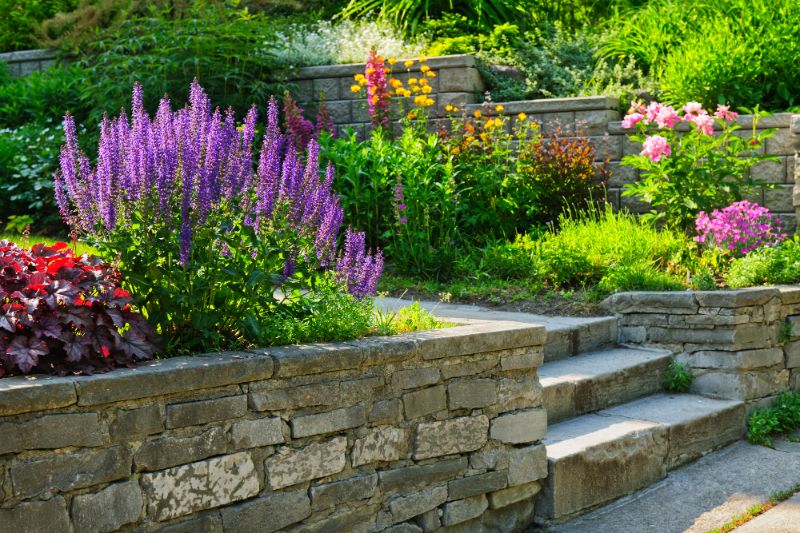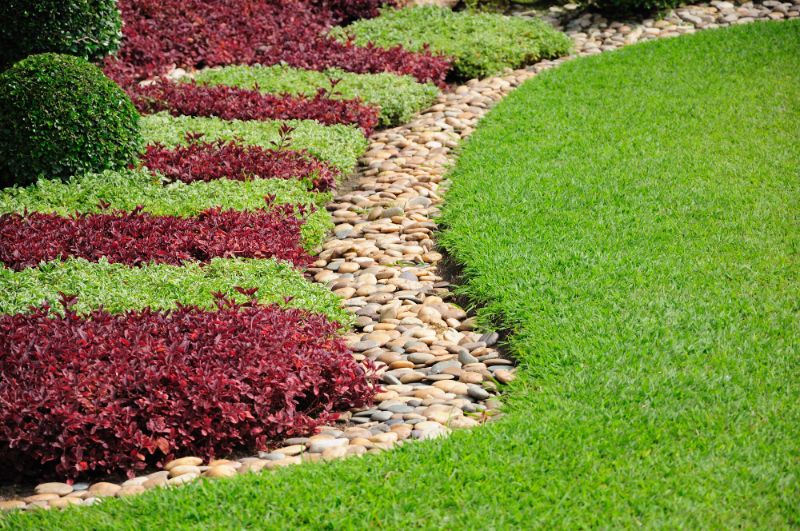If you’re trying to bring a spark of life into your garden, landscaping could be the missing piece of the puzzle. A creative and carefully structured landscape design not only adds beauty to your outdoor space but can also give a major boost in terms of overall health and well-being for both humans and plants alike.

From incorporating items like water features to gardening with native species, here’s a look at how landscaping can make or break your garden’s health. And, we’ll give you some tips on what you need to consider when it comes time to undertake this exciting venture!
The importance of soil health and how it affects the success of your garden
Beautiful gardens are a sight to behold, but the key to a thriving garden isn’t just pretty flowers and lush foliage. The soil is the foundation of your garden’s success. Just like we need a balanced diet to thrive, plants need healthy soil to grow. Soil health refers to the physical, chemical, and biological properties that allow plants to grow and thrive.
Poor soil health can cause plants to wilt, become stunted, or even die. Healthy soil supports the growth of strong roots, prevents soil erosion, and retains water and nutrients. It’s important to invest in soil health to ensure a beautiful and successful garden.
Different landscaping techniques to help improve your soil quality
Landscaping isn’t just about making your yard look pretty. It can also be a great opportunity to improve the health of your soil. Different landscaping techniques can help improve your soil quality, which in turn helps your plants grow stronger and healthier.
For example, planting cover crops during the off-season can help control erosion and add nutrients to the soil. Composting is another effective technique, which helps reduce waste and improves the soil’s structure and water retention. For those with space restrictions, raised garden beds are a great option, as they also allow for better soil quality control. By implementing these and other landscaping techniques, you can help create a healthier, more vibrant outdoor space.
Tips for choosing the right plants for your landscape design
Choosing the right plants for your landscape design is essential for enhancing the beauty of your outdoor space. However, with so many options available, it can be overwhelming to pick the right ones. First, consider the climate in your area and choose plants that can thrive in it.
Plus, think about the amount of sunlight your yard receives and select plants that suit its requirements. Take into account the soil quality and drainage system, as well. Choosing plants that are native to your area will also make it easier for them to adapt and grow. Finally, consider the height, shape, and color of the plants, and how they blend together to create a cohesive design. With these tips in mind, you can choose the right plants that will transform your yard into a beautiful oasis.

How to create a maintenance plan for your garden to ensure its longevity
Now, doing this is crucial for ensuring its longevity and vibrancy. One important step to include in your plan is regular maintenance from a trusted tree company. Trees are a cornerstone of any outdoor space, providing shade, oxygen, and beauty.
However, they also require specific care and attention to thrive. A skilled tree company can help with trimming, pruning, and assessing any potential issues before they become major problems. Moreover, whether you need a local tree company in Jacksonville, or any other city for that matter, you’re sure to find some online. That way, you can find the best tree care professionals near you.
Benefits of using natural and organic fertilizers
If you’re an avid gardener, you’re well aware of how important the right fertilizer is for the growth and health of your plants. While chemical fertilizers have been the norm for decades, many are turning towards more natural and organic options. Why? For starters, the nutrients in organic fertilizers are released slowly over time, which means your plants won’t get overwhelmed with too much growth all at once.
Also, the long-term benefits of using natural fertilizers include healthier soil and a reduction in pollution as well as a safer environment for you and any animals that might frequent your garden. Lastly, when you use all-natural fertilizers, you won’t have to worry as much about chemical buildup over time, which means you can enjoy your garden for years to come.
How to save water in drought-prone areas with water-wise gardening practices
Water is a precious resource, and in drought-prone areas, conservation practices are essential. One way to actively participate in water conservation efforts is through water-wise gardening practices. Selecting drought-resistant plants that require less water and using efficient irrigation methods can save a significant amount of water.
And, composting and mulching can help retain moisture in the soil and reduce evaporation rates. These practices not only conserve water but also promote healthier and more sustainable gardens. Embracing water-wise gardening practices can make a significant difference in drought-prone areas and contribute to the larger effort of conserving precious water resources.

All of these tips for creating a successful garden, no matter your soil quality or area of the country in which you live, provide invaluable guidance and knowledge to anyone looking to put their green thumb to work. With just a little effort and planning, your garden can not only survive in any climate but also thrive!
Whether it’s soil health, choosing the right plants for your landscape design, or implementing water-wise practices for drought-prone areas, small changes add up to big dividends. So why wait? Get out into your garden and get started today.
Take action now and ensure that your green space lives up to all its potential. Choose natural and organic fertilizers as much as possible, develop a maintenance plan, and research different suggestions based on your area’s weather conditions, these are all important steps along the way to transforming your outdoor space into something special.
With time and dedication, you’ll be able to proudly present a beautiful and sustainable garden that will offer years of enjoyment.
